| From the Open Files of: | Northwest Synod of Wisconsin Resource Center |
| Contributed by: | Rev. Dr. Loretta Kuse & Dr. Hildegard Kuse |
This file is available in: Word .doc, .rtf, |
|
The Wonderful Bitternut Tree
Walnut Family
Bitternut Hickory "Bitternut" "Pignut"
(Carya cordiformis)
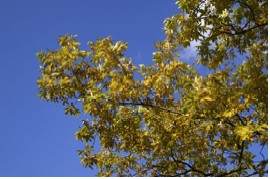
The trees of the LORD are watered abundantly, the cedars of Lebanon that he planted. In them the birds build their nests; the stork has its home in the fir trees. Psalm 104:16-17
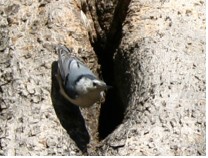
White-breasted Nuthatch that Made its Home in the Bitternut Tree
Trees are homes for many animals. They also support the growth of other plants. As we rake in fall we can examine the fallen leaves to see what might have lived there or continue to live there.
A Bitternut tree in the Kuse Nature Preserve has been there for many years. Look at the curled and dying leaves. They are yellow or brown. Some may have galls attached to them. Various insects make galls. Eggs are laid on the leaves and a protective covering forms around the hatching, maturing egg in summer. Later it emerges but the scarred, knobby gall remains.
The Bitternut leaves may have been choice food for the larva of the Luna Moth. If birds did not eat the larva it would have spun a cocoon in summer. In autumn this cocoon would fall off with the leaves. Lawn mowing might cut and kill it. Stepping on it could break it. Squirrels might have found it and eaten it. Only a few of the many survive. As leaves are raked it is important to look for, pick up, and protect these Luna Moth cocoons.
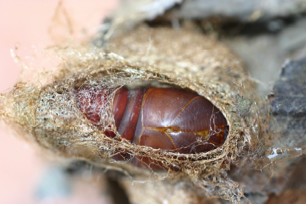
Luna Moth Cocoon
If kept cold over winter they will survive and eclose in Late May or early June and the cycle will start over.
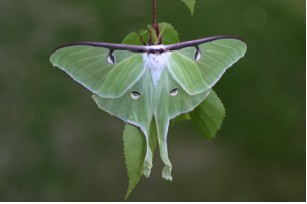
Luna Moth
Walk and rake carefully for you may find one of these special creatures God has made. Help preserve and protect it.
Look for the nuts. They are round and light colored and may still have a green or brown husk covering them.
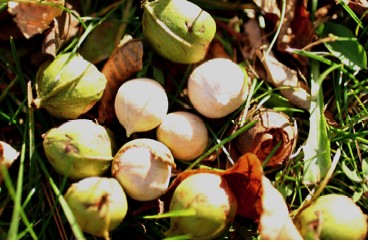
The Bitternuts are a favorite food for squirrels.
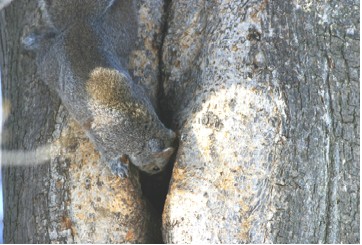
A hole in the tree provides a home for them.
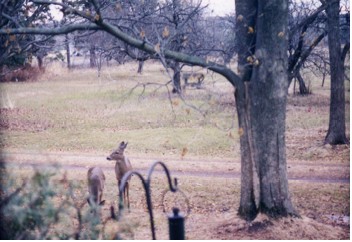
Deer also sometimes come to eat the nuts or mast.
Dear Lord,
Thank you for opening our eyes to see and learn new things about this tree. Help us to care for all that you give us. In your name we pray.
Amen
[ LEAF RAKING DEVOTIONS ] • [ HOME ]
© Copyright 2005 by the Northwest Synod of Wisconsin
Resource Center.
Please see our usage
policy.
NW Synod of Wisconsin Resource Center